
AR in education: 10 use cases, examples & implementation tips
November 30, 2023
by Itransition Editorial Team
reviewed by
Dmitry Danilov, Head of Mobile Center of Excellence
Augmented reality in education is the use of technology overlaying sensory information onto the real world to enhance the learning of new skills and understanding of complex concepts through immersive visuals and interactivity.
According to a joint report by UNESCO, UNICEF, and World Bank, in low and middle-income countries, the share of children living in learning poverty is about to reach 70%. While there are myriad factors at play, the International Labour Organization cites students’ disinterest in education as one of the most significant reasons for the learning crisis.
AR in education can play a key role in making learning more engaging, increasing student motivation, and improving academic performance. This is why forward-looking educational institutions are now looking to collaborate with experienced AR software development providers like Itransition to transform the learning experience.
AR in education market statistics
CAGR of AR in education from 2023 to 2033
FactMR
AR in education market size in 2023
FactMR
of teachers want an increased presence of VR and AR in the classroom
EdTechnology
10 AR use cases in education
The rapid proliferation of AR in education is hardly surprising as the barriers to AR development and technology access have been significantly lowered. Mobile devices are also highly affordable and powerful, while AR applications have become user-friendly enough for both educators and students to use in the classroom. This has ensured an abundance of tangible applications for AR in education.
1 Immersive learning
Educators can use AR to provide students with a more immersive learning experience by presenting study objects as 3D models rather than two-dimensional representations, allowing learners to get a better idea of their scale and features. In this case, AR-powered apps often act as repositories of 3D models that educators can use in a wide range of scenarios and fields, including history, astronomy, anatomy, and other classes.
2 Subject specialization
Some educational AR solutions focus on improving learning for a particular subject or learning objective rather than targeting a wide range of disciplines. For example, an AR-based geometry app can help students understand the basics of plane geometry by superimposing 3D shapes on paper sheets.
3 Special education
Given that AR is exceptional at engaging children of all ages, this technology has proven to be especially potent for improving the learning experiences of students with disabilities. This way, by providing students with virtual scenarios that imitate real-life social interactions, students with disabilities can learn and experiment without the fear of being judged or other negative consequences.
4 STEM education
The majority of STEM subjects, including chemistry, physics, and mathematics, often require spatial visualization and abstract thinking, which may be challenging for some students. With AR, students can contextualize the learning of these subjects by interacting with 3D representations of mathematical functions, chemical reactions, and physical concepts.
5 Medical training
Successful medical education and training come down to real-life, hands-on experiences for students. Given that many medical training options are expensive, AR becomes a cost-effective and accessible alternative. For example, by overlaying virtual human anatomy models on top of real people, medical students can examine body parts and organs in isolation and get a better grasp of how skeletal, muscular, and nervous systems work.
6 Arts & humanities
AR in education goes beyond STEM subjects, having found its use in arts, humanities, and other related disciplines. For example, in art classes, students can enhance their creative skills by superimposing new elements of their work in 3D. Additionally, teachers can make history lessons more captivating by overlaying virtual reconstructions of historic landmarks onto the real world.
7 Soft skills & career development
AR can be equally beneficial for learning soft skills, which are especially important in fields where communication and critical thinking take center stage. For instance, students can communicate with virtual humans, powered by AR and AI, who can give dynamic feedback, make contextual gestures, and exhibit emotions. Whether it’s workplace skills or public speaking, simulations can be invaluable tools for students to practice interactions in no-risk virtual environments.
8 Technical education & specialized training
Getting actionable knowledge in agriscience, manufacturing, engineering, and other technical fields often calls for real-life experiences that can be dangerous and expensive. In the meantime, AR can help learners to get the necessary hands-on experience without putting themselves at risk. For example, many AR applications allow students to assemble equipment, interact with machinery, and conduct experiments in 3D environments.
9 Immersive classroom simulators
By using AR, prospective teachers can practice their teaching methods, especially handling specific high-stress scenarios in a controlled environment. By interacting with virtual students as they would in a real classroom, educators can gain insights into their teaching techniques and refine their classroom management skills.
10 Bias awareness & sensitivity training
AR can help reveal unconscious biases that teachers can have. Educators can engage with simulated classrooms that comprise students from diverse backgrounds, allowing them to get a better insight into how their biases impact decision-making and develop strategies to address them, creating a more inclusive learning atmosphere.
Transform classrooms into immersive learning environments with AR
Examples of augmented reality in education
Complete Anatomy
Complete Anatomy, an Apple Design Award winner, is an educational AR-based cross-platform app created by 3D4Medical. The app has an interactive anatomy atlas that can be used to visualize gross anatomy models as well as microscopic structures of cells and tissues. Featuring around 20,000 body structures, the app allows users to view body parts in isolation, follow artery pathways, and explore neurovascular structures and muscle movement.
With the help of augmented reality, users can also place a 3D anatomical model of a human body on any surface, while the multi-user mode enables multiple students to simultaneously view the virtual dissection of different body parts on their devices. Finally, app users can add and remove body layers and visualize the impact of various injuries like bone fractures or muscle strains.
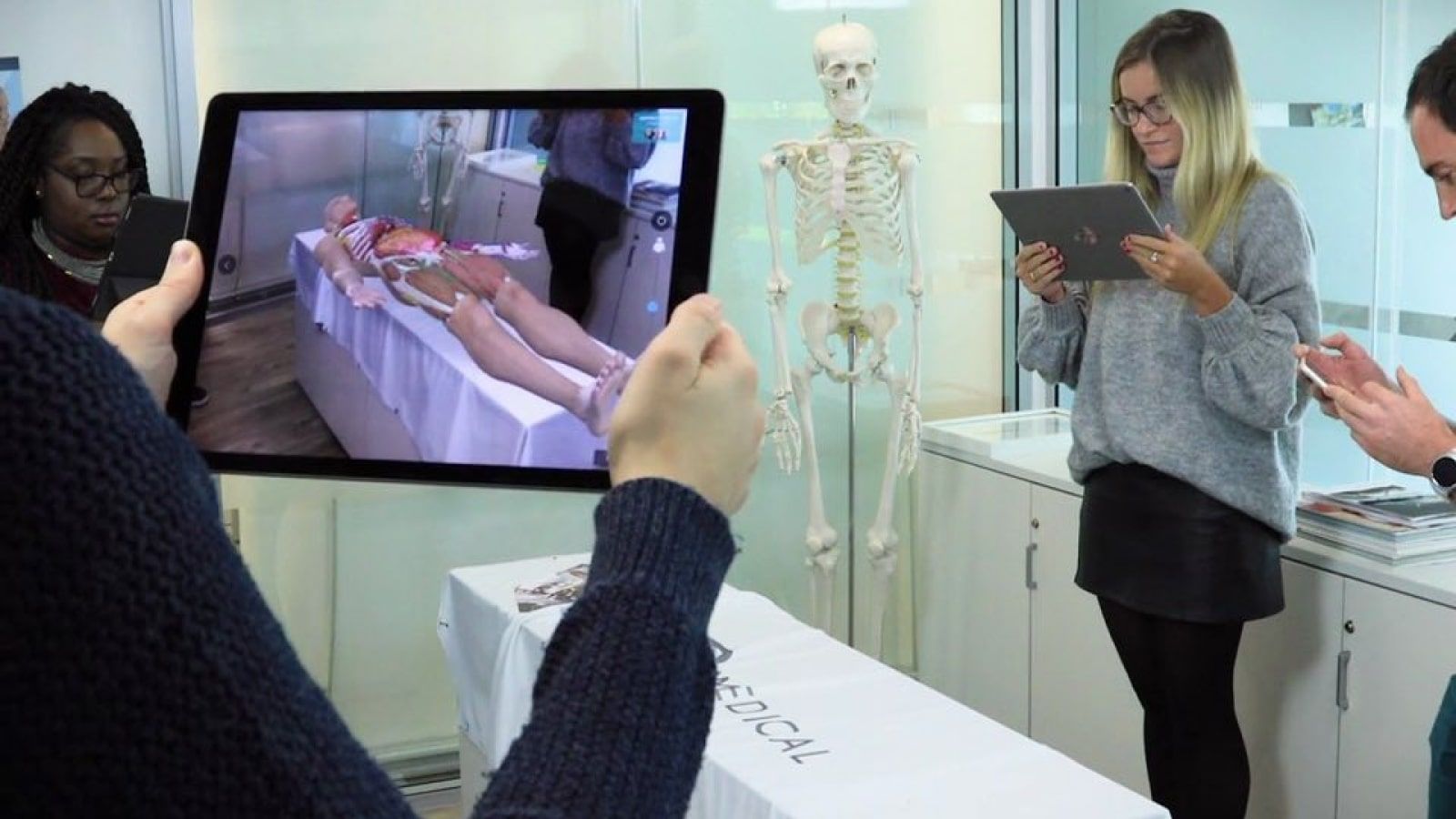
Image title: Complete Anatomy app in action
Image source: 3d4medical.com — AR
Geogebra AR
Geogebra AR is an open-source edtech application that allows students to draw geometric objects and visualize mathematical functions. Researchers from the University of Murcia used Geogebra AR to teach their students mathematics and determine the effectiveness of augmented reality in improving spatial intelligence. Students could modify the parameters of objects to change their geometry, flip and rotate them to visualize different perspectives, and place multiple mathematical functions in one space to see how they relate to each other.
After conducting comprehensive research experiments, professors also revealed that students who used AR-based learning methodology had a significantly higher level of understanding when it came to mathematical functions than those who used traditional learning methods.
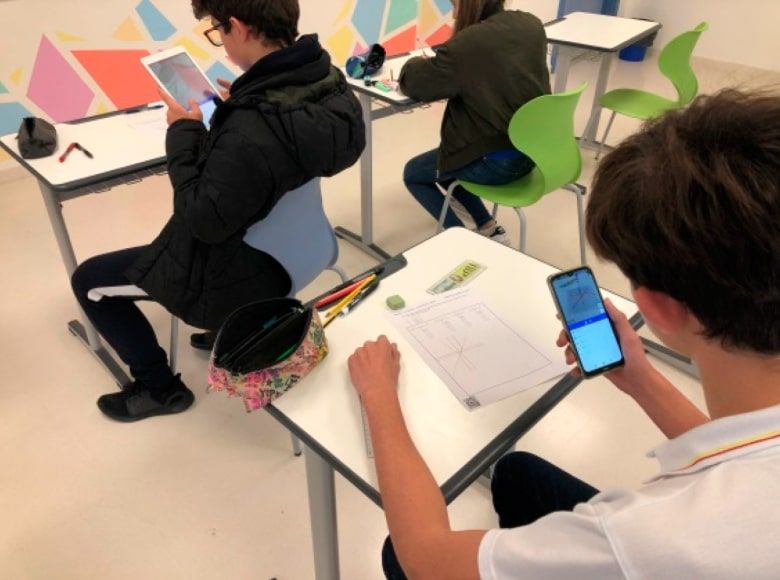
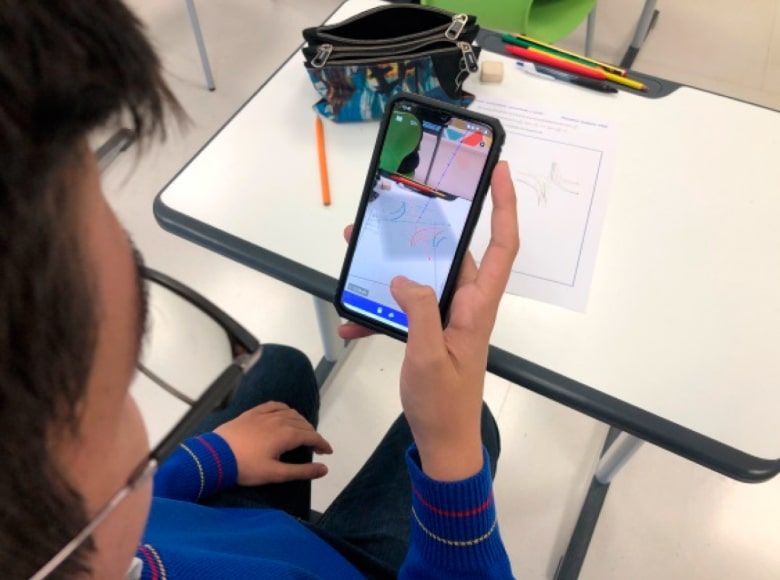
Image title: Geogebra AR app in action
Image source: mdpi.com — Application in Augmented Reality for Learning Mathematical Functions: A Study for the Development of Spatial Intelligence in Secondary Education Students

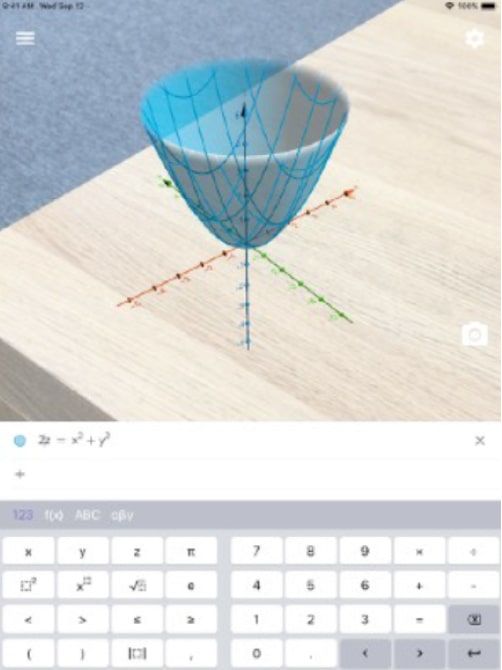

Image title: Creating a function using the Geogebra AR app
Image source: apple.com — Augmented Reality in Education. Lesson Ideas
AROSE
In 2013, Su Cai, along with other faculty members from Beijing Normal University, conducted a convex imaging experiment using AR, in which eighth graders explored various physics concepts like image distance and focal distance. Students used three virtual markers as a substitute for candles, convex lenses, and fluorescent screens. In 2018, the researchers integrated augmented reality with Kinect to allow students to better understand and ‘feel’ magnetic fields. By waving a hand in front of the depth camera, students could see how the magnetic field reacted.
In 2020, the faculty conducted optical simulation experiments using augmented reality to demonstrate the photoelectric effect. Explaining abstract concepts like the microscopic phenomenon of the photoelectric effect without creating special conditions can be particularly challenging, so the researchers developed a specialized augmented reality app AROSE to simulate a virtual lab. As shown in the image below, students can press on a particular area on the card to operate the virtual lab equipment and visualize the photoelectric effect. Researchers found out that students who used AR to learn these physical concepts scored significantly higher in terms of conceptual understanding than those who used conventional learning methods.
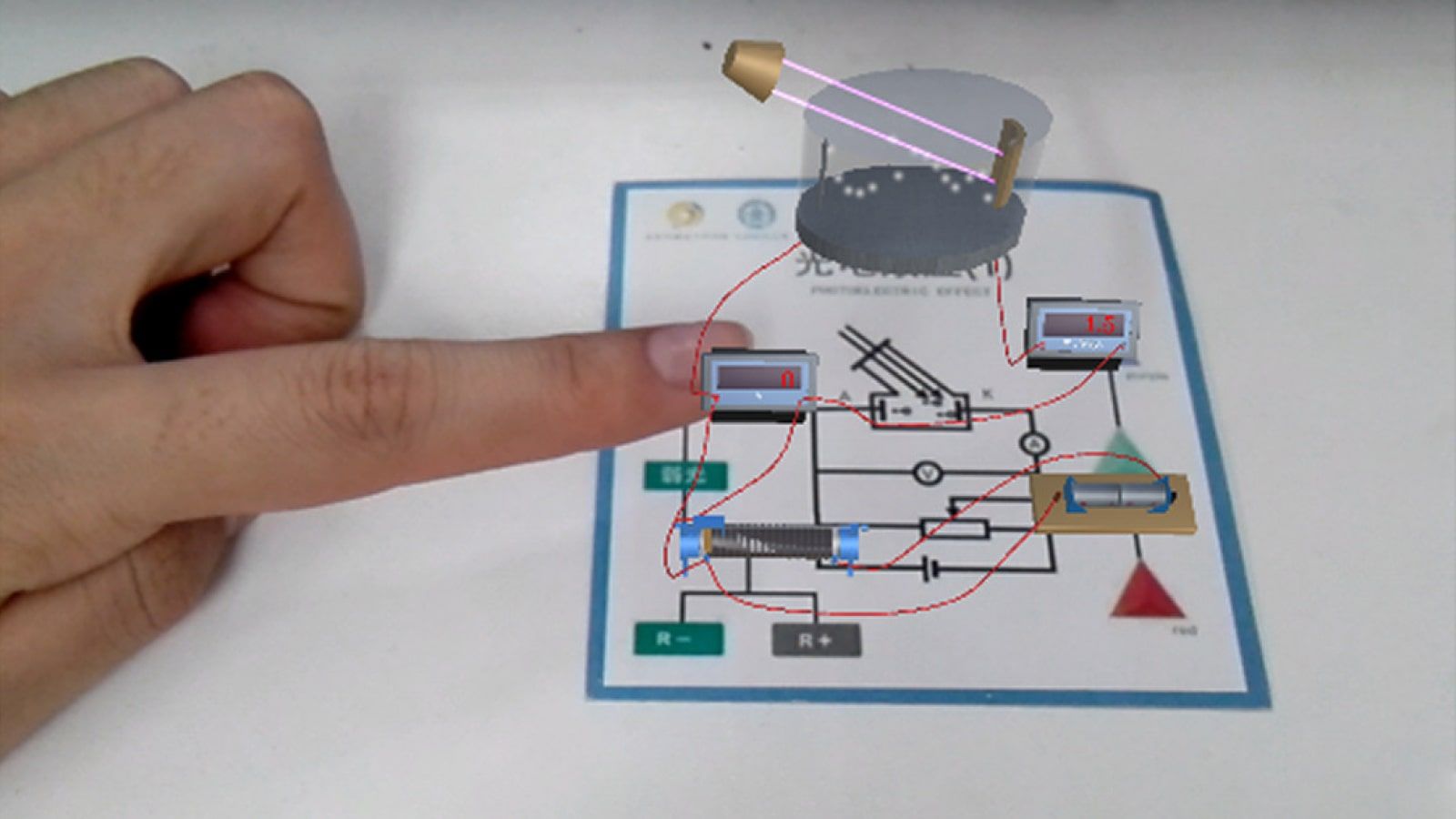
Image title: AROSE app in action
Image source: bera-journals.onlinelibrary.wiley.com — Effects of learning physics using Augmented Reality on students’ self-efficacy and conceptions of learning
Merge EDU
Merge EDU is an AR-based learning tool that helps students to get a better grip on complex science and STEM concepts. The app allows students to place 3D objects in the real world and interact with them, solve built-in quizzes, convert Paint 3D designs into virtual objects, and share their virtual creations with each other. From placing life-size animals into the classroom to interacting with invisible waves to studying a life-size human anatomy model, there is an abundance of ways for students to transform learning essential subjects into engaging and immersive experiences.
One of the distinct benefits of Merge EDU is that it comes with a curriculum-aligned library of teaching aids, activity plans, and integrated quizzes, allowing teachers to start using the app from the get-go.
Video title: Merge EDU AR-based learning system
Video source: mergeedu.com
Fundamental vs generative AR learning objects
Fundamental AR objects are stand-alone resources that provide digital content without additional context or guidance. Such objects can be easily integrated with existing learning materials, meaning that teachers have more freedom when planning lessons. Importantly, fundamental AR objects can’t interact with the user’s surroundings or with other AR objects.
Generative AR objects, on the other hand, are digital resources that come with interactive assessments, guides, gamification elements, and collaborative features. Generative AR objects are designed to address specific learning objectives but provide less freedom for educators to change lesson plans and often call for customization through software development. One of the main advantages of generative AR objects, when compared to fundamental ones, is that they can interact with the user's surroundings. For example, some AR apps can be location-dependent or require a physical object to link an AR object.
Fundamental AR
Generative AR
Advantages
Advantages
Easy to integrate into lesson plans Easy to create and implement new AR objects
Comes with a predefined lesson plan More diverse educational content types
Disadvantages
Disadvantages
Linking AR objects to user surroundings requires additional skills
Fewer opportunities to combine with the existing teaching materials Harder to design and implement
Scheme title: Fundamental vs generative AR
Data source: google.com — Augmented reality in education, 2020
AR technologies used for building educational solutions
ARKit & ARCore
ARKit and ARCore are software development kits (SDKs) created by Apple and Google, respectively, to facilitate AR experiences on mobile devices. They are the preferred choices for developing educational AR apps on mobile platforms.

Advanced AR/VR engines
To provide students with more advanced AR experiences, developers often turn to the following engines:
Unity
Unity is a powerful game engine that can be used to create AR applications for both iOS and Android through its integrated AR Foundation framework. Unity allows developers to leverage advanced features like environment tracking, object tracking, and real-time camera feed processing.
Unreal
Unreal is also a popular game engine that supports both ARCore and ARKit and helps developers create AR interactions without writing code with the help of a visual scripting system Blueprint. Unreal is known for its high-quality graphics capabilities, allowing the creation of visually stunning educational AR experiences.
Empower educators and learners alike with tailored AR solutions
8 benefits of AR in education
Augmented reality is a powerful educational tool that, along with other new technologies such as AI for education, can significantly improve the learning process by supplementing real-world learning with virtual objects in real-time.
Increased engagement
Highly interactive learning experiences help educators spark enthusiasm and curiosity among students, which leads to more effective learning.
Reduced cognitive load
AR significantly reduces the cognitive workload needed to grasp abstract concepts, helping students to focus on the actual learning.
Improved academic performance
With the hands-on learning approach provided by AR, students can deepen their understanding of a specific subject and get better grades.
Enhanced learning experience
AR enables students to safely conduct dangerous experiments, visualize complex objects, and interact with otherwise expensive machinery.
Improved knowledge retention
By making learning more memorable and interactive, students can achieve better knowledge retention and recall.
Reduced costs
Compared to other educational tools, AR solutions are more cost-effective as a smartphone with a camera is often the only technology needed for using them.
Enhanced inclusivity
AR in education can make learning more inclusive for students with special needs by providing alternative ways of presenting the information.
Improved self-learning
Given that students can use AR apps even at home, self-learning becomes more engaging, immersive, and effective.
Adoption barriers for education AR
Obstacle
Recommendation
The education sector remains one of the most challenging for AR adoption due to the limited availability of immersive content.
The education sector remains one of the most challenging for AR adoption due to the limited availability of immersive content.
Further development of augmented reality in education comes down to collaboration between governmental bodies, AR companies, and educational institutions to integrate AR content into the curriculum. This will consequently increase the demand for AR-enabled learning.
The lack of research on the integration of AR/VR with education is the major barrier to its adoption in education.
The lack of research on the integration of AR/VR with education is the major barrier to its adoption in education.
Institutions need to design specialized programs that encourage students to experience the technology first-hand and allow teachers to better understand how AR can fit into learning experiences.
Students from underserved communities have limited access to devices like smartphones and tablets and slow internet speed, which significantly limits their experiences with AR.
Students from underserved communities have limited access to devices like smartphones and tablets and slow internet speed, which significantly limits their experiences with AR.
In this context, improving access to AR is the responsibility of governmental bodies. However, close cooperation between governmental authorities and private businesses, including telecom companies, software providers, and hardware manufacturers and distributors, can facilitate the broader adoption of AR in education.
The new era of education
The impact of augmented reality on student engagement, learning outcomes, and confidence is unmatched by any other education technology on the market, perhaps except for VR education. By bringing innovative teaching methods into the classroom, education professionals can spark students’ interest and enthusiasm in many complicated subjects. Importantly, adopting augmented reality doesn’t require significant investment as the majority of today’s smartphones are capable of supporting AR applications. So, educational institutions should take advantage of the current situation and start exploring AR possibilities in classrooms, further stirring up interest among students and app developers.
Here, at Itransition, we believe in the transformative power of AR for education. If you just have a vision or are already working on a project that needs expert input, our experienced consultants and engineers can help.
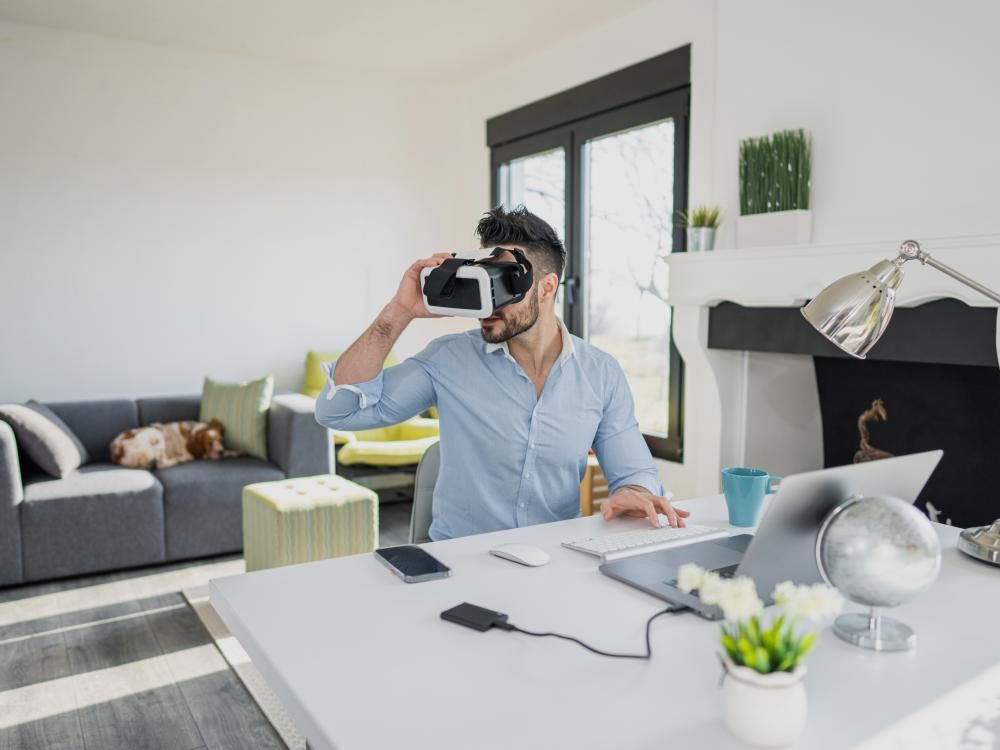
Insights
VR in education: aims, use cases, and success stories
VR-powered education is taking off globally. Learn about its promises and success stories from this overview of latest developments.

Case study
An AR app for interacting with celebrities
Learn how Itransition helped to develop an AR app for interacting with celebrities for iOS and Android.

Case study
A furniture manufacturing software suite
Read the story behind Itransition’s 5-year collaboration with a leading UK furniture manufacturer on web, mobile and VR solutions.
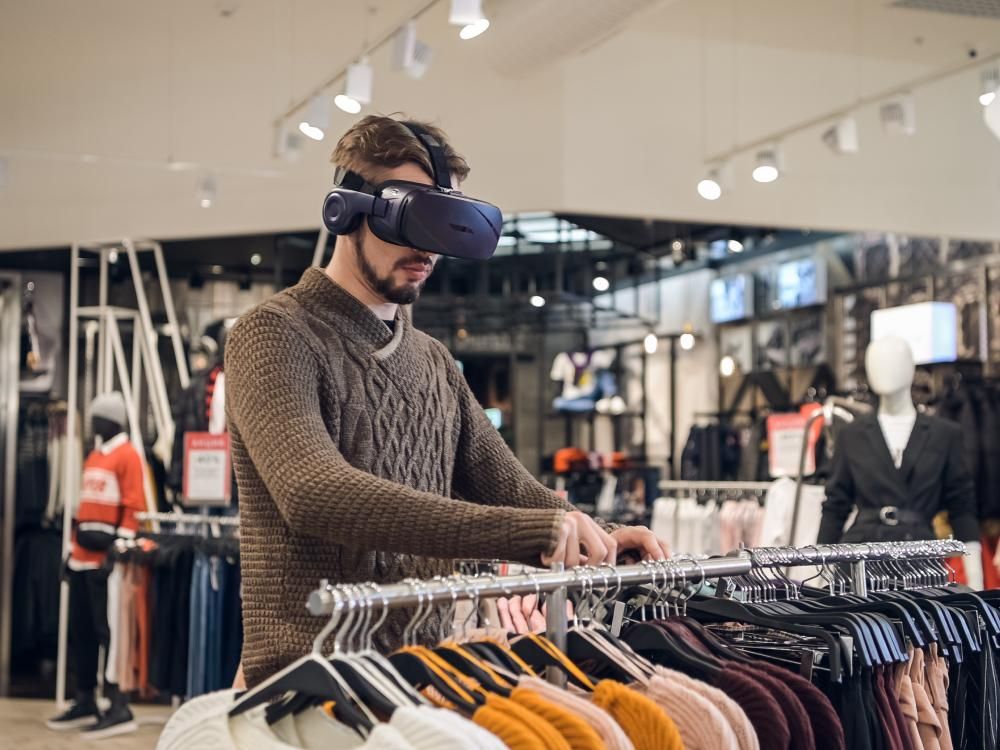
Insights
Virtual reality in retail: 11 use cases, benefits, and adoption practices
Explore the concept of virtual reality in retail, its benefits, use cases, and the best VR adoption practices

Insights
Virtual stores: an end-to-end solution overview
Explore how virtual stores bridge the gap between online and in-store shopping, helping retailers better engage with customers through immersive experiences.